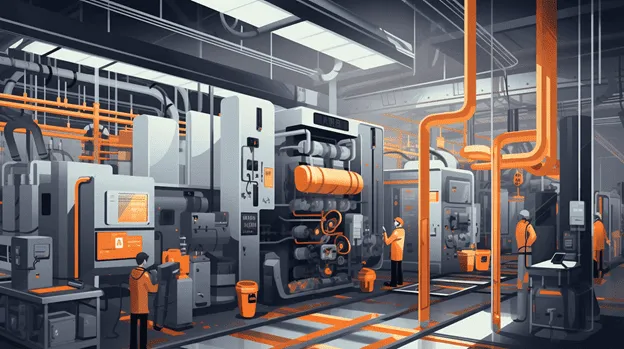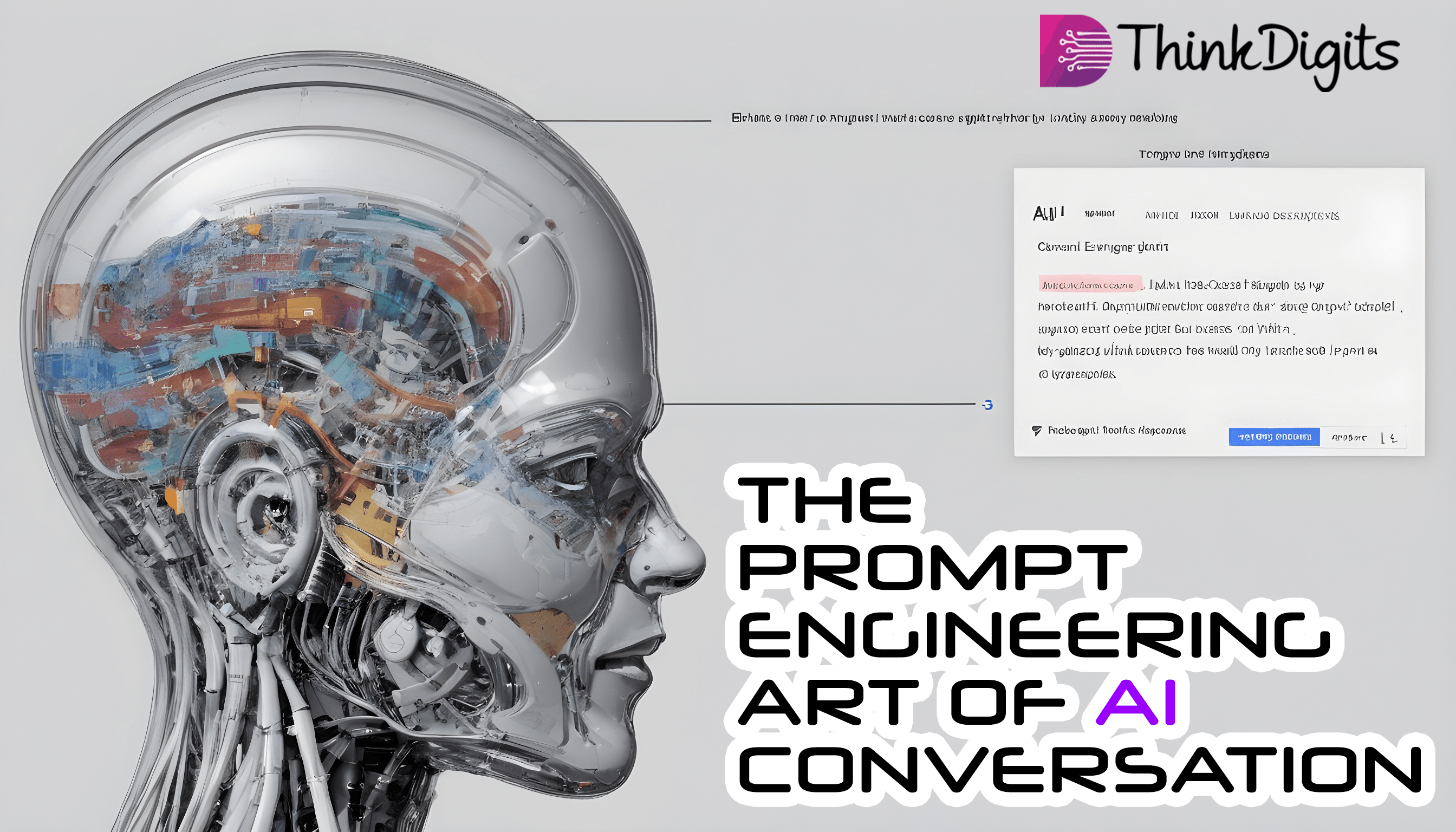Entering the world of predictive maintenance in manufacturing is like peeking behind the curtain of a magic show. It’s a place where algorithms, sensors, and sophisticated technologies sidestep the worst-case scenarios of equipment failure, ensuring that the wheels of production continue to turn seamlessly. This remarkable approach to maintenance has been generating quite some buzz in the manufacturing world, and it’s easy to see why.
Imagine predicting precisely when a machine in your production line might fail or require maintenance. Not only can you preemptively address issues before they spiral into costly repairs, but you can also significantly reduce downtime, improve efficiency, streamline operations, and ultimately, boost productivity. From decreasing maintenance costs to increasing uptime, the benefits of predictive maintenance are profound and transformative. Over the following few sections, we will delve deep into the crucible of predictive maintenance, demystifying its concepts, highlighting its importance, and illuminating its multifaceted advantages.
Understanding Predictive Maintenance
In the hyper-competitive world of industry and commerce, it’s no longer enough for systems and equipment to be merely “fixed” after they break. The wave of the future is predictive maintenance, a strategy aimed at scanning the health of industrial machines and systems so we can address potential issues before they arise. It’s all about forecasting and heading off trouble early, minimizing costly downtime and maximizing efficiency. This strategy can reshape industries, streamlining operations and steering companies towards more sustainable methods of operation.
1. The Meaning of Predictive Maintenance
Predictive maintenance refers to using advanced tools, real-time data, and analytics to predict when equipment failure could occur. This pioneering approach allows us to transition from a reactive strategy – which often means equipment failure without warning, impacting output and profitability – to a proactive one where potential problems are anticipated and resolved before they bring operations to a screeching halt.
On an operational level, we’re talking about using machine learning algorithms, data analysis, and other techniques to make sharp and accurate forecasts. It’s the breakdown heartbeat of a machine, the rhythm of an operative system, or the pulse of a gear mechanism we’re tuning into. The predictive approach values early intervention and acts as the industrial version of an Apple Watch’s ECG function – keeping close tabs on the health of the machinery and providing insightful diagnostics.
2. Essential Trends in Predictive Maintenance: Thermography Techniques and Plug-and-play Technology
As the predictive maintenance landscape keeps evolving, a few trends that are turning heads include adopting thermography techniques and plug-and-play technologies.
Thermography is an imaging technique that detects heat patterns or temperature changes in objects, materials, or areas. Heat concentrations in industrial equipment often signal friction and wear, an early warning sign of potentially significant issues. Using thermography, companies can identify risk zones before they become disasters.
On the other hand, Plug-and-play predictive maintenance refers to systems that can be easily installed in existing industrial setups. These systems are designed to integrate seamlessly with your existing machinery, saving you the time and cost of overhauling an entire system. They are easy to implement, intuitive to use, and thus significantly speed up the adoption of predictive maintenance in various industries.
3. Predictive Maintenance Objectives: Minimizing Costly Downtime and Improving Efficiency
Predictive maintenance’s ultimate goal is to keep your systems running smoothly with minimum intervention. Predictive maintenance helps a business remain competitive in a demanding market by minimizing costly equipment downtime and improving overall efficiency.
The fiscal advantages are evident – small interventions early in the machine’s life can lead to substantial savings. But it’s not just about the economics. Predictive maintenance also ties in neatly with responsible business practices as it increases efficiency and reduces media, energy, and resource usage.
While predictive maintenance might seem straight out of the future, it is here and now and changing how we handle business operations. So, whether you are in manufacturing, energy, or any other sector that is controlled by machinery, predictive maintenance can empower your business to sidestep preventable issues, keep the wheels turning, and the profits rolling in.
The Importance of Predictive Maintenance in Manufacturing
The exhilarating pace of today’s manufacturing sector necessitates using advanced strategies to ensure efficiency, quality, and safety. One such critical strategy is predictive maintenance, a forward-looking approach aiming to anticipate potential equipment failures before they occur. It is a groundbreaker, a game-changer, and to agree, it’s bandied about in many boardrooms worldwide. Now, let’s reveal why predictive maintenance has become an undeniable force in manufacturing.
1. Industry Prioritization of Preventive Maintenance – 76% of Companies
Regarding prioritizing manufacturing strategies, a staggering 76% of companies have placed preventive maintenance at the top of their list. This percentage is a compelling testament to the considerable benefits of this proactive approach.
- Cost-Saving : By averting equipment failures, companies save considerably on repair, replacement, and downtime costs.
- Enhanced Productivity : Predictive maintenance avoids unexpected equipment downtime, ensuring a smooth and efficient production process.
- Improved Safety : Equipment malfunctions can lead to workplace accidents. By “predicting” these malfunctions, safety is significantly enhanced.
2. Maintenance Personnel Favor – 80% of Maintenance Personnel
Deeply entrenched within the manufacturing sector are the men and women who keep the gears turning: the maintenance personnel. A whopping 80% of these hard-working individuals are strongly in favor of predictive maintenance. Their endorsement isn’t surprising considering the following benefits unique to their roles:
- Reduced Stress : Equipment failures can create high-pressure situations. Predictive maintenance takes the element of surprise out of equipment maintenance.
- Job Efficiency : With the ability to anticipate equipment failures, maintenance personnel can better plan their schedules and prioritize tasks.
3. Utilization by Manufacturing Companies – 88% Use Preventive Maintenance
It’s no wonder that an impressive 88% of manufacturing companies utilize predictive maintenance in their operations. The return on investment can be substantial, with downtime reduction and improved productivity leading to noticeable gains on the bottom line. An interesting fact is that a significant 40% of these companies apply preventive maintenance using analytics tools. These tools provide invaluable data insights that can enhance the effectiveness of maintenance strategies.
To sum it up, predictive maintenance in manufacturing is no longer a luxury or a choice; it has become a necessity. Staying ahead in today’s competitive manufacturing landscape requires the kind of proactive approach that only such strategies can provide.
Predictive Maintenance Market Trends and Projections
The role of predictive maintenance in modern industry operations cannot be overstated. Its increasing incorporation across different sectors illuminates just how transformative this approach can be. It enhances efficiency, mitigates unprecedented machine downtimes, and significantly reduces costs. Underlining its growing importance, recent studies spotlight a surging global market value; let’s embark on exploring these fascinating financial forecasts.
1. Current Value (2021) – $4.16 Billion
With industries progressively embracing digitization and Internet of Things (IoT) technologies, predictive maintenance has secured a comprehensive footprint. As of 2021, the global market size for predictive maintenance stands with a commanding worth of approximately $4.16 billion. The driving factors? Industries are gradually understanding the value proposition offered by predictive maintenance – heightened efficiency, reduced downtimes, and considerable cost savings.
2. Projected Value (2026) – $18.55 Billion
Looking forward into the horizon of 2026, predictive maintenance is set to unfold an inspiring growth story. The market projections suggest a leap to an incredible $18.55 billion. This leviathan growth rate can be accredited to the expanding applications of predictive maintenance in the manufacturing sector, healthcare, transportation, and energy among others. The surge in industrial data volumes and rising emphases on operational efficiency also contribute significantly to this projected expansion.
3. Projected Value (2030) – $38.7 Billion
Delving a bit deeper into the future, the forecast for 2030 means even more exciting times for the predictive maintenance market. The estimated valuation is a staggering $38.7 billion. The augmenting trend towards Industry 4.0, the growing deployment of cloud-based solutions, and the ever-evolving artificial intelligence tech are pegged as the main drivers propelling this prodigious growth.
4. Predicted Growth – CAGR of 30.9% (2021-2026) and CAGR of 24.2% (2023-2030)
The Compound Annual Growth Rate (CAGR) sums up the whole narrative, painting a compelling picture of the growth trajectory of the predictive maintenance market. With an impressive CAGR of 30.9% over 2021 to 2026, followed by a solid 24.2% CAGR during 2023 to 2030, it’s demonstrably clear that predictive maintenance is a rapidly escalating frontier.
Overall, these striking numbers hint towards a future dominated by predictive maintenance. As the technology continues to mature and obtain wider acceptance, its market footprint will continue to broaden. Therefore, for industries eager to step up their game, paying heed to the rising trend of predictive maintenance is not just a choice; it’s a necessity.
Cost-effectiveness of Predictive Maintenance
1. Maintenance Costs Range
The need to understand the economic implications of machine maintenance in a production setting is becoming increasingly essential. It’s no secret that maintenance costs — that is to say, the expenses incurred by regular upkeep, repairs or replacement of parts, and potential overhaul of equipment — can gobble up a significant portion of production costs. Estimates peg these expenditures at anywhere between 15% to as high as 40% of the total production budget, which indeed, is a substantial bite out of any company’s profits!
Unfortunately, maintenance isn’t avoidable. Machinery breaks down, technical glitches occur, and as time goes by, equipment experiences wear and tear, driving these expenses. Moreover, any downtime caused by equipment failure can further escalate costs, not just in maintenance, but through lost production as well. The solution to this ever-present conundrum? Predictive maintenance, which effectively uses monitoring and advanced data analytics to signify when equipment maintenance is necessary!
2. Reducing Downtime and New Equipment Costs
By leveraging predictive maintenance, companies can significantly reduce both operational downtime and the cost of new equipment. How, you ask? Well, predictive maintenance takes advantage of technological advancements like the Internet of Things (IoT), Artificial Intelligence (AI), and machine learning to monitor the state of equipment continuously. By doing so, the system can predict when a machine is about to fail or needs upkeep, allowing you to schedule and undertake repairs proactively.
This way, you can mitigate the risk of unexpected downtime, which is shown to be reduced by 5-15% when utilizing predictive maintenance strategies. The story doesn’t end there, though — it also brings about financial savings in the form of reduced new equipment costs. By maintaining existing equipment meticulously, you can extend the lifespan of your machines, which can effectively decrease the need for new purchases and, consequently, result in a cost reduction of around 3-5%.
Therefore, investing in predictive maintenance is a strategic move for any business seeking to expand their profit margins. Through proper implementation and thorough analyses of equipment patterns, it can lead to substantial savings in the long run, making it an investment that truly pays for itself!
Benefits of Implementing Predictive Maintenance
The age-old saying, “Prevention is better than cure” holds true even for machinery and equipment maintenance strategies. While traditionally breakdown and time-based upkeep have been popular, the recent wave of digital integration and technology advancements have paved the way for predictive maintenance. The shift from reactive to proactive maintenance can revolutionize industrial operations, and in this section, we will uncover the major benefits of implementing predictive maintenance.
1. Increased Uptime
Perhaps one of the most notable advantages of predictive maintenance is the increase in productive uptime. This proactive strategy focuses on detecting potential issues in equipment and machinery before they manifest into catastrophic failures. Ensuring an early understanding of system malfunctions:
- Leads to fewer unscheduled stops.
- Allows better planning for repairs and replacements, reducing downtime.
- Enhances overall productivity and keeps the operation running smoothly.
Unlike conventional maintenance methods, predictive maintenance gives you a detailed peek into the future, leveraging technologies such as AI and IoT to accurately forecast when a piece of equipment might fail. The earlier you detect an issue, the more time you save, and the higher the uptime.
2. Improved Reliability
Reliability is key to efficiency in any operation. By implementing predictive maintenance, you are not only taking preventive measures but also improving the reliability of your systems. Here’s how:
- Identifying and fixing issues before they cause failures enhances system stability.
- Regular monitoring and predictive analysis keep your machinery performing at its best.
- Reducing the chances of unexpected breakdowns bolsters trust in the system.
With the help of predictive maintenance, you provide your machinery with the care it requires to perform consistently at its peak, thereby enhancing productivity and ensuring customer satisfaction.
3. Enhanced Safety
Overlooking minor issues in equipment can sometimes lead to dangerous situations, causing harm to the staff and damaging the equipment itself. Predictive maintenance is pivotal in enhancing workplace safety. How so?
- Early detection of issues reduces the chance of equipment failure that could lead to accidents.
- By predicting breakdowns ahead of time, potential safety hazards can be avoided.
- Regularly monitored machinery is less likely to cause emergencies, leading to a safer working environment.
Adopting a predictive maintenance strategy boosts your operation’s performance and productivity and equally prioritizes employee safety, which is an integral part of any industry’s success.
Implementing predictive maintenance is an investment that reaps numerous benefits. It sets a clear path towards operational excellence with greater uptime, improved reliability, and enhanced safety. It may be the solution you’ve been looking for to elevate your machinery maintenance strategy to a higher level of effectiveness.
Key Enabling Technologies for Predictive Maintenance
The world of maintenance has grown in leaps and bounds, transitioning from the reactive to the predictive realm. In recent years, businesses have learned the importance of preventing machine malfunctions instead of merely reacting to them. Predictive maintenance, which uses technology to predict machine errors before they occur, plays a pivotal role in reducing downtime and costs. This approach certainly isn’t magic—rather, it’s driven by key enabling technologies like Artificial Intelligence (AI), Machine Learning (ML), and the Internet of Things (IoT). These interwoven technologies make predictive maintenance possible, opening up new possibilities for operational efficiency.
1. Artificial Intelligence (AI)
Just as humans have intelligence that aids us in interpreting and interacting with our environment, machines can be equipped with a kind of “intelligence,” albeit artificial. AI grants machines the ability to learn from past data and execute tasks that typically necessitate human intellect – such as predicting potential tool degradation or failures. By indexing vast amounts of data, AI can identify patterns that hint at a potential failure way before any human could notice.
2. Machine Learning (ML)
Machine Learning is a subfield of AI where machines “learn” from historical data. Through algorithms, ML models can predict upcoming failures based on a machine’s past performance. For instance, an ML algorithm might analyze a machine’s operational data—like temperature, vibration, and sound—to anticipate wear and tear. This ML-aided foresight can prompt preventive measures, making predictive maintenance more tangible.
3. Internet of Things (IoT)
In the mix of IoT, machines, devices, sensors, and human beings interact on an interconnected network. This combination offers a boost to predictive maintenance. IoT devices latch onto machines, harvesting data about their operations in real-time. The data then travels over the network and feeds into AI and ML systems, which in turn analyze the information for potential issues. This interconnectivity makes the IoT crucial for predictive maintenance.
The integration of IoT, AI, and ML systems is quintessential for predictive maintenance. With these technologies, equipment breakdowns in businesses and industries can become a thing of the past. Predictive maintenance could usher in a new era of efficiency, enhancing equipment lifespan, improving safety, and cutting operating costs. It’s indeed a tour de force in a world that’s rapidly digitizing.
Condition Monitoring Sensors in Predictive Maintenance
Preventative and corrective maintenance strategies no longer suffice in our rapidly transforming industrial environment. Leaping forward and adapting to the shift towards Industry 4.0, the trending solution lies in the realm of predictive maintenance. A technologically advanced and proactive approach, predictive maintenance casts a trusty safety net to ward off any potential unplanned downtimes or costly repairs. And at the heart of predictive maintenance, is the powerful legion of condition monitoring sensors.
1. Vibration Monitoring
Seated prominently on the throne of condition monitoring sensors, Vibration Monitoring sensors serve as vigilant watchers, alerting the system to signs of abnormalities or malfunction within rotating machinery. A subtle increase in excessive vibration, promptly detected by these sensors, can signal mechanical issues such as misalignment, imbalance, or even bearing wear in motors, gearboxes and fans.
- Steady Condition: Normal operation.
- Mild Condition: The onset of instability, marked by a surge in vibration levels.
- Severe Condition: A crucial level signifying deep-rooted issues in the machinery.
- Critical Condition: An imminent threat of complete machine downfall.
Such instantaneous detection and classification of anomalies, allow industries sufficient time to enact remedies before a catastrophic failure occurs.
2. Electrical Testing
Condition monitoring is as much about ‘seeing’ as it is about ‘feeling’. Hence, Electrical Testing sensors hold an equally significant rank in proactively scouting signs of potential machinery malfunction. Their principal function is to monitor the health of power systems by measuring parameters like infrared, ultrasonic, and partial discharge.
“These sensors use various techniques such as power quality analysis, thermography, motor current or circuit analysis to identify abnormalities,” says a leading industry expert. “They play a pivotal role in preventing component failure, reducing downtime and maintaining operational efficiency.”
On identifying a potential issue, these vigilant guards trigger predictive maintenance schedules, seeking to ward off an impending catastrophic breakdown.
3. Oil Analysis
A great machine is akin to a healthy body; the lifeblood that ensures its smooth operation is the lubricating oil. Like any good doctor who studies blood samples for signs of diseases, Oil Analysis sensors review the chemical composition, particle count, and viscosity of oil to understand the health condition of the machinery.
- Wear Metals: Indicate component wear.
- Contaminant Metals: Reveal material leak from seals or coolers.
- Oil Health: Displays the oil’s ability to perform its function.
This insightful data, in turn, indicates if components are wrongly installed, if the machinery requires cleaning, or if the oil itself should be replaced to ensure optimum functionality.
As the world advances towards predictive maintenance, these condition monitoring sensors – Vibration Monitoring, Electrical Testing, and Oil Analysis, will continue to play an indispensable role. After all, when it comes to industrial efficiency, prevention will always be the best strategy to ensure superior operational efficiency and longevity.
Conclusion
As we untangle the complexities of the manufacturing industry, predictive maintenance stands out as a powerful asset for companies aiming to increase efficiency and reduce costs. Indeed, with techniques such as thermography, electrical testing, and advanced data analysis, we’re operating on the front lines of industry innovation.
Many industries have rapidly embraced predictive maintenance tools, and the market’s value is expected to skyrocket in the following years. But, adopting these digitally-driven solutions is only half of the battle – ensuring they’re implemented effectively is crucial.
With industry pioneers like ThinkDigits offering top-of-the-line solutions incorporating AI, ML, and IoT, predictive maintenance can become as common as a wrench or crowbar in your toolkit. As a leading provider in assisting companies with digital transformation, ThinkDigits holds noteworthy expertise that could prove invaluable in your journey towards a more profitable, efficient, and sustainable operation.
In this era of rapid technological growth and ever-increasing expectations, is your company ready to explore the potential of predictive maintenance? If yes, ThinkDigits awaits you on the other side of the digital transformation journey, offering advanced AI services to help a smooth, organized transition. With ThinkDigits as your trusted partner, the promise of increased productivity, cost-effectiveness, and overall operational excellence is well within reach.



